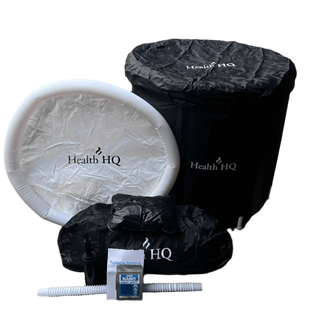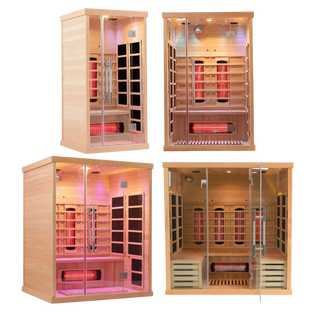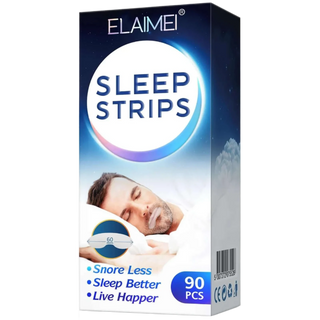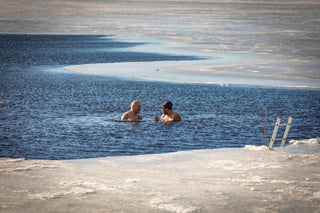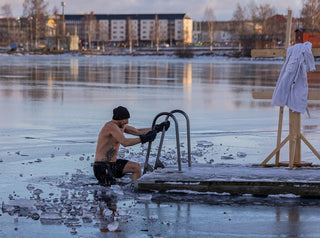Ice Baths vs. Saunas vs. Contrast Therapy: Which Recovery Method Actually Works Best?
In the world of sports recovery, ice baths, contrast water therapy, and saunas are three of the most popular methods used by athletes to reduce soreness and improve performance. But how do they actually compare? In this guide, we’ll break down the benefits, differences, and when to choose one method over another.
What Is an Ice Bath?
An ice bath, or cold water immersion, involves sitting in water temperatures typically between 10°C to 15°C (50°F to 59°F) for around 10–15 minutes.
It is designed to rapidly cool the body, constrict blood vessels, and reduce inflammation, which can help decrease muscle soreness and speed up recovery.
What Is Contrast Water Therapy?
Contrast water therapy (CWT) is the alternating immersion of the body between cold and hot water.
Typically, athletes move between cold baths (10°C–15°C) and hot baths (38°C–43°C) in cycles lasting 1–3 minutes each, repeated several times.
The goal is to stimulate blood flow through rapid constriction and dilation of blood vessels, flushing out waste products and delivering fresh oxygen to muscles.
What Is Sauna Therapy for Recovery?
Sauna therapy uses high heat (70°C to 100°C / 158°F to 212°F), often combined with dry or humid air, to promote relaxation and improve circulation.
Exposure to heat stresses the cardiovascular system in a beneficial way, leading to improved blood flow, faster muscle recovery, and reduced delayed onset muscle soreness (DOMS).
Ice Baths vs. Contrast Water Therapy
|
Feature |
Ice Baths |
Contrast Water Therapy |
|
Primary Benefit |
Inflammation reduction |
Enhanced circulation and metabolic waste removal |
|
Experience |
Very cold, numbing sensation |
Alternating sensations (cold then hot) |
|
Ease of Setup |
Simple (ice + water) |
Requires both cold and hot baths |
|
Typical Session Time |
10–15 minutes |
15–20 minutes (multiple cycles) |
|
Best For |
Acute injuries, high-impact training |
Recovery from prolonged exercise (endurance events) |
Summary:
Ice baths are best when you want fast inflammation control after hard impacts or strength training.
Contrast water therapy is more effective for promoting circulation after long-duration events like marathons or triathlons.
Ice Baths vs. Sauna Recovery
|
Feature |
Ice Baths |
Saunas |
|
Primary Benefit |
Reducing muscle inflammation |
Promoting muscle relaxation and circulation |
|
Experience |
Cold, intense discomfort |
Warm, soothing comfort |
|
Ease of Setup |
Requires ice and cold water |
Requires a sauna room |
|
Typical Session Time |
10–15 minutes |
15–30 minutes |
|
Best For |
Immediate post-exercise inflammation |
Recovery boost and general relaxation |
Summary:
Ice baths blunt inflammation and are ideal after intense physical exertion.
Saunas are better for long-term recovery, promoting overall muscle relaxation and cardiovascular health.
Which Recovery Method Should You Choose?
- Choose ice baths if you need to rapidly reduce soreness and control swelling after heavy lifting, sprinting, or contact sports.
- Choose contrast water therapy if you’ve completed a long endurance session and want to flush out toxins while stimulating blood flow.
- Choose sauna therapy if you want to enhance general recovery, improve heart health, and enjoy mental relaxation after routine training.
Tip: You can even combine methods by using cold plunges immediately post-workout, then saunas 24 hours later for longer-term benefits.
Ultimately, the best method depends on your training type, goals, and personal preference.
Conclusion
Ice baths, contrast water therapy, and sauna recovery each have unique strengths. Whether you’re looking to speed up muscle repair, reduce inflammation, or just unwind after a tough workout, choosing the right recovery method can make a big difference in your training performance and long-term health. Experiment with each option to find the perfect fit for your recovery needs. Check out our cold therapy products and our heat therapy products.


